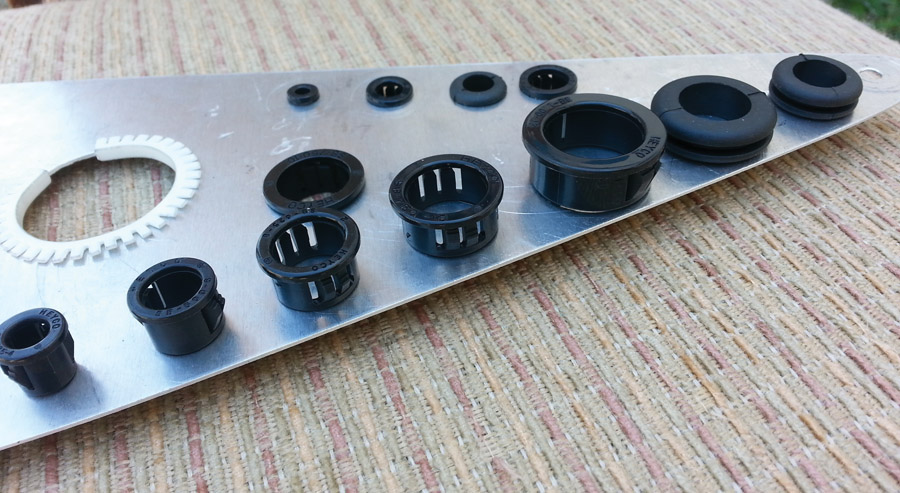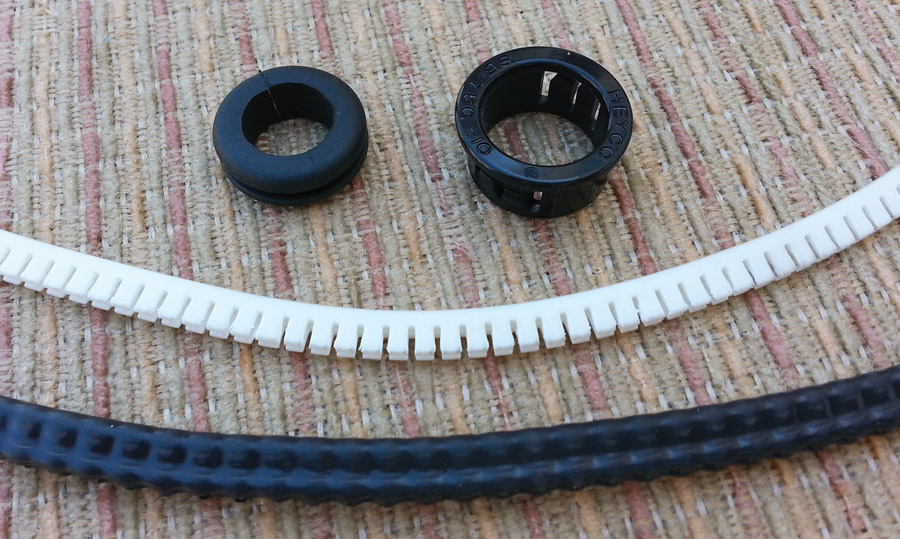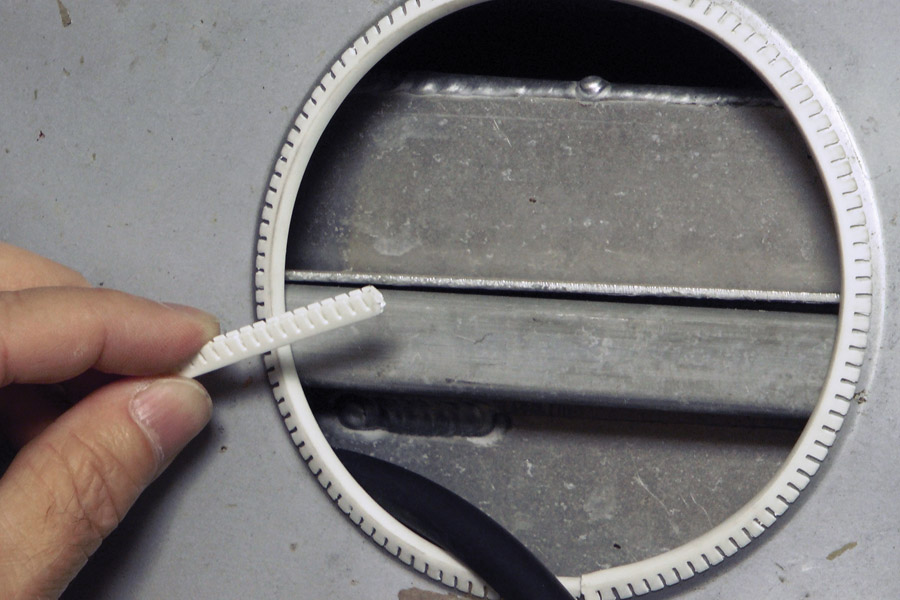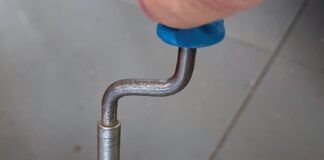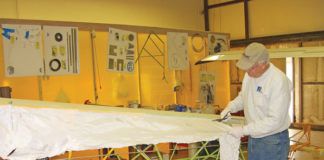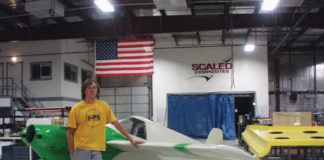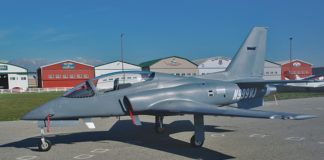Sometimes neglecting small details can bite us on the backside when Murphy is on the prowl. One such detail is making sure that sharp edges on structures within our airframes do not abrade wire and fuel lines that cross their paths. The repetitive high-frequency vibrations from an engine can cause harm when they are transmitted to metal edges even when they don’t feel sharp to our fingers.
Most of us are familiar with the concept that any small hole through a metal structure should always have a grommet or bushing installed to protect passing wires or fuel lines from abrasion. Other sharp edges we may encounter belong to larger lightening holes in wing ribs, bulkheads or other structures in the aircraft. Our cables and wires need protection from all challenges to their well-being as they traverse the lengths of our airframe.
Rubber grommets are available from aircraft suppliers using the AN931 part number in a wide range of sizes. These grommets conform to a military spec such that their material is resistant to hot oil and coolant. Silicone grommets are best for high-temperature locations.
Nylon snap bushings offer a wonderful alternative to rubber and are also available in many sizes. These can be purchased from electronic and auto parts suppliers. Some builders consider bushings superior to their rubber grommet counterparts as the nylon is not so prone to deterioration over the life of the aircraft.
If grommets and bushings have the smaller holes covered, what should be used for the larger holes and irregularly shaped sharp edges?
Flexible grommet edging can fit the bill. This is a general term for the thin, flexible strips that are designed to cover thin edges of a structure (within the edging’s design limits) to offer a protective, blunt covering. Since we often work with formed metal sheets in our aircraft possessing a thickness range of .020 to .040 inch, a single size of flexible grommet edging will usually have us covered for most any application in our aircraft.
There are two general styles of flexible grommet edging readily available for our use:
1. The expensive, heavy-duty, industrial kind made of coated metal (about $7 per foot). Advantages include: grips securely with spring-like force, can handle relatively high temperatures, conforms to a military specification. Available from aircraft parts suppliers.
2. The inexpensive, lightweight type made of nylon or similar material (about 40 cents per foot). One disadvantage is that this style may require application of an adhesive for a permanent grip. Available from electronic component suppliers and Amazon.
A benefit of the nylon variety is that because of its low cost, we will be inclined to use it liberally and protect more potentially abrasive locations. This causes us to error on the side of safety.
With these choices of grommets, bushings, and flexible grommet edging, you have an effective set of options to keep your aircraft safe. Apply them to all sharp edges near your electric cables and fly with peace of mind.

